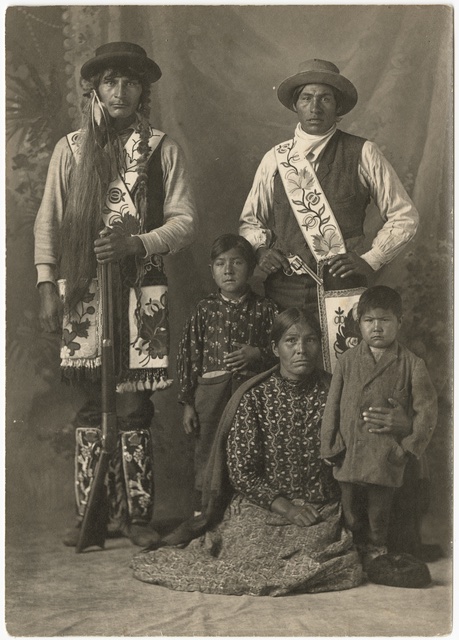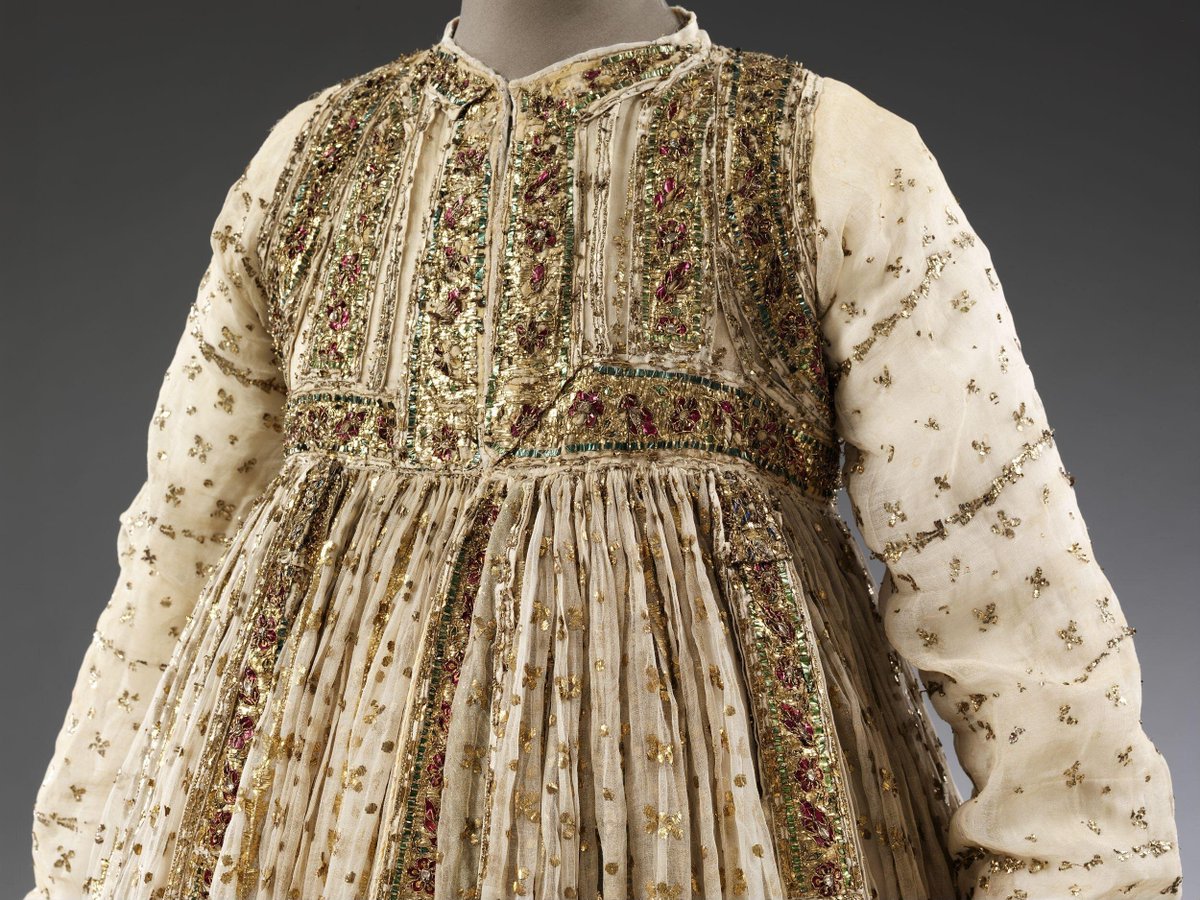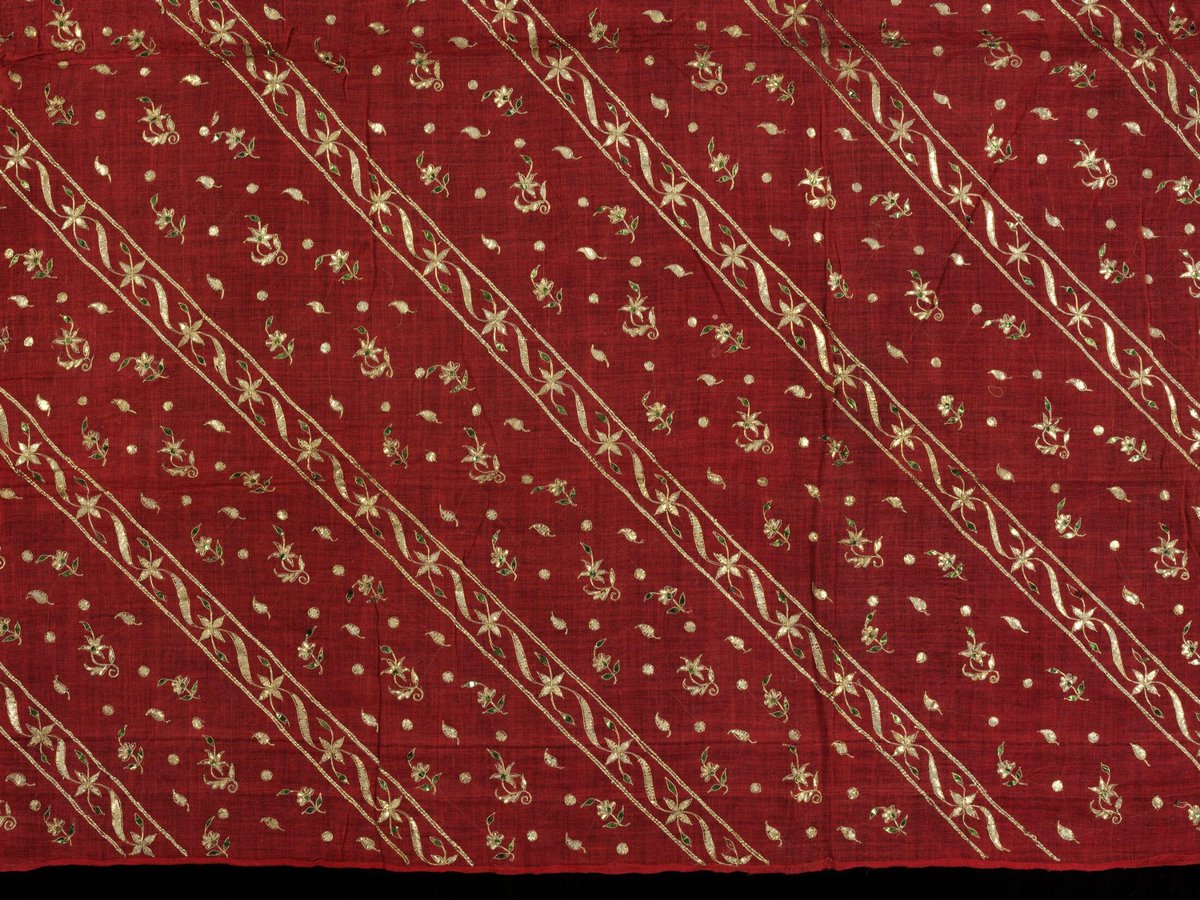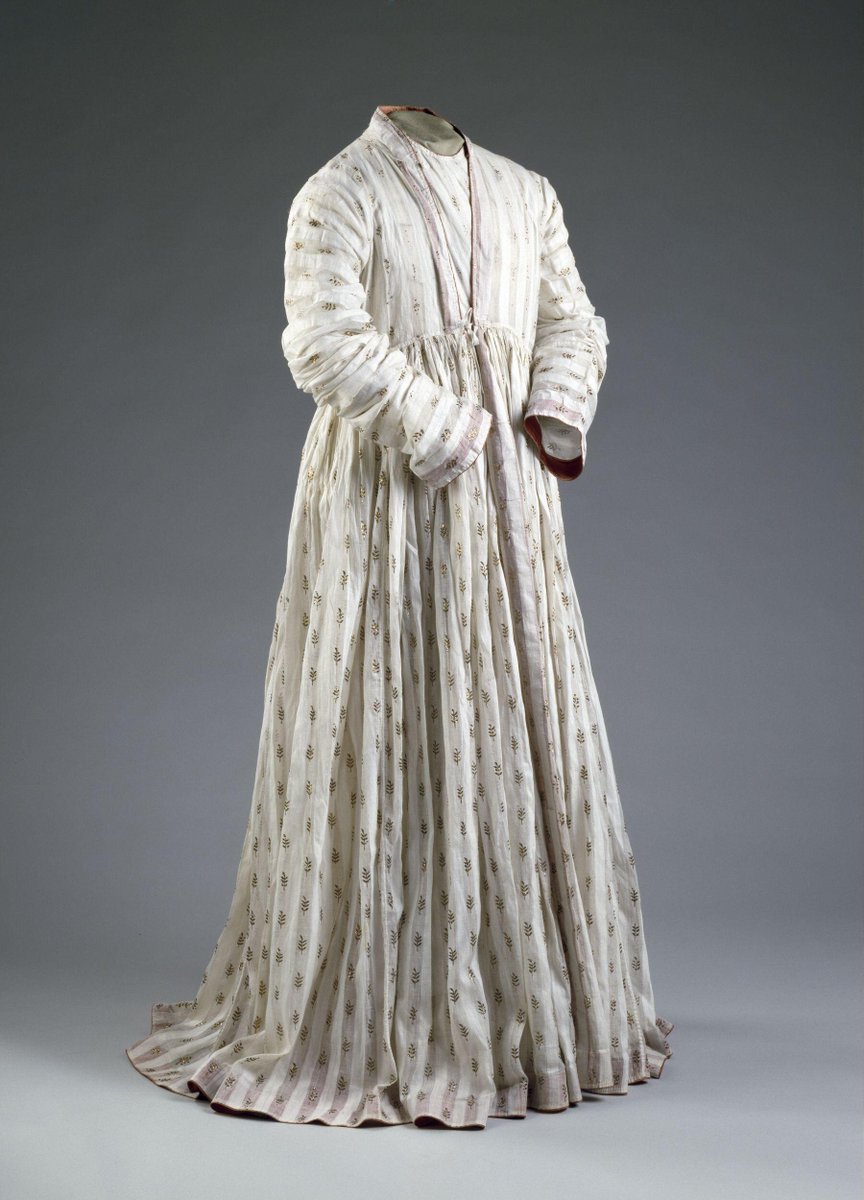
1 - Welcome to #ThreadTalk! Today we're tackling the venerable bead.
Don't be fooled: This. Subject. Is. Huge. 🤯
We're touring the world throug alchemy, biology, archaeology -- and learn how colonialism & slavery figures in.
Featured: Sioux (Teton) woman's dress from 1880.
Don't be fooled: This. Subject. Is. Huge. 🤯
We're touring the world throug alchemy, biology, archaeology -- and learn how colonialism & slavery figures in.
Featured: Sioux (Teton) woman's dress from 1880.

2 -Like its cousin embroidery, beads are a world heritage art. Beads evolve next to humanity, it seems.
But how beads are treated, valued & traded--and what they're made of--well, that's where things get interesting.
Featured: Helmet - Fang People, late 19th C/early 20th C
But how beads are treated, valued & traded--and what they're made of--well, that's where things get interesting.
Featured: Helmet - Fang People, late 19th C/early 20th C

3 - Beads are plentiful in archaeology, often long outlasting the threads that held them. These here are probably from Cyprus from 750BC-300BC & I would totally wear them.
Basically, people found shells & shiny things, went “mine” & the Precious was became... wait, wrong story.
Basically, people found shells & shiny things, went “mine” & the Precious was became... wait, wrong story.

4 - These shells from Morocco's limestone caves from the Aterian people may be the oldest on record (84,000 years, y'all).
These are made of Nassarius gibbosulus shell.
That's all a bead is: an object that can be strung for decoration--whether in jewelry or added to fabric.
These are made of Nassarius gibbosulus shell.
That's all a bead is: an object that can be strung for decoration--whether in jewelry or added to fabric.

5 - But what are beads made out of? Well, the earliest beads were made of shells, bones, clay & other materials.
They could also be ash, fossils, precious metals & other animal matter (like porcupine quills).
Featured: ca. 9th century B.C., Iran
They could also be ash, fossils, precious metals & other animal matter (like porcupine quills).
Featured: ca. 9th century B.C., Iran

6 - That said: I am going into some sensitive territory. In many cultures, beads are sacred. Many museums house sacred items that were looted, plain and simple.
I believe museums should return stolen objects, full stop. Looking at you, British Museum.
I believe museums should return stolen objects, full stop. Looking at you, British Museum.
7 - The Indus valley has some of the most brilliant caches of early carnelian stone beads. Dating from the 3rd millennium BC, they used *chemistry* to make designs.
In Mesopotamia some of them even had poetry on them, or signified connection to rulers or royalty.
In Mesopotamia some of them even had poetry on them, or signified connection to rulers or royalty.

8 - The Egyptians gave us faience, that famed glasslike material. You see it all over the place in ancient Egypt, including in scarab beads (more on that later).
More info about faience making here: metmuseum.org/toah/hd/egfc/h…
Featured: Broad collar of Senebtisica. 1850–1775 B.C.
More info about faience making here: metmuseum.org/toah/hd/egfc/h…
Featured: Broad collar of Senebtisica. 1850–1775 B.C.

9 - You can see all kinds of beadwork in jewelry along with the rise & fall of civilizations, as well, often using precious & semi-precious stones (my precious).
These Byzantine 7th Cearrings are a stunning example of pearl beads & sapphires, forged together in this open design.
These Byzantine 7th Cearrings are a stunning example of pearl beads & sapphires, forged together in this open design.

10 - Many new kinds of beads came to the forefront in the Middle Ages, often discovered as a side-effect of alchemy. Italy became the glass powerhouse.
This is also where this story gets really upsetting. And it has everything to do with slavery, trade, colonialism, & greed.
This is also where this story gets really upsetting. And it has everything to do with slavery, trade, colonialism, & greed.

11 - Africa has a long history of beadwork, of course, being the very cradle of humanity. Ostrich shells were used early on, and for some African nations, beads are even a form of communication.
This video traces the history of Northern African beads:
This video traces the history of Northern African beads:
12 - Among the Ndebele people, for instance, different patterns are worn during a woman's life.
I'd go so far to say that parts of Africa developed a whole language of beadwork... which became exploited by white slavers and colonists.
Featured: Ndebele wedding blanket.
I'd go so far to say that parts of Africa developed a whole language of beadwork... which became exploited by white slavers and colonists.
Featured: Ndebele wedding blanket.

13 - Beads were so valued, that it became one of the primary payment methods for slaves, labor, and goods. Murano beads from Italy were particularly prized and you'd better believe Europeans went to TOWN.
It gets worse.
It gets worse.

14 - The export volume was so great that slave ships used the Venetian beads as ballast to balance.
Europeans made so many beads for the slave trade that the market collapsed due to inflation.
Millefiori (thousand flowers) beads became known as "African trade beads." No words.
Europeans made so many beads for the slave trade that the market collapsed due to inflation.
Millefiori (thousand flowers) beads became known as "African trade beads." No words.

15 - In the 19thC, glass beads were introduced to indigenous tribes in the Americas. Already skilled in decorative arts, seed beads found new life.
In my research, this beadwork comes up again & again. In spite of atrocity after atrocity. Cree shoulder bag, 1810.
In my research, this beadwork comes up again & again. In spite of atrocity after atrocity. Cree shoulder bag, 1810.

16 -Let it sink in. We live on stolen land, we are awed by stolen artifacts.
This art has persisted, in spite of better efforts to eradicate it.
This reticule from Mexico blends indigenous designs with a colonialist fashion trend; ca. 1818-1830,
This art has persisted, in spite of better efforts to eradicate it.
This reticule from Mexico blends indigenous designs with a colonialist fashion trend; ca. 1818-1830,

17 - I could share indigenous art of the First Nation and Native American people all day, and perhaps I shall soon.
Here are a few more before we get to some more.
Sioux (Teton) dress, 1870.
Here are a few more before we get to some more.
Sioux (Teton) dress, 1870.

19 - What else can you make beads out of? Remember I talked about scarabs?
Beetle beads originated in India. The "sequin" comes from the outer wing of Sternocera aequisignata, and was incorporated into embroidery beginning in the 19th C.
They glisten iridescent green.
Beetle beads originated in India. The "sequin" comes from the outer wing of Sternocera aequisignata, and was incorporated into embroidery beginning in the 19th C.
They glisten iridescent green.
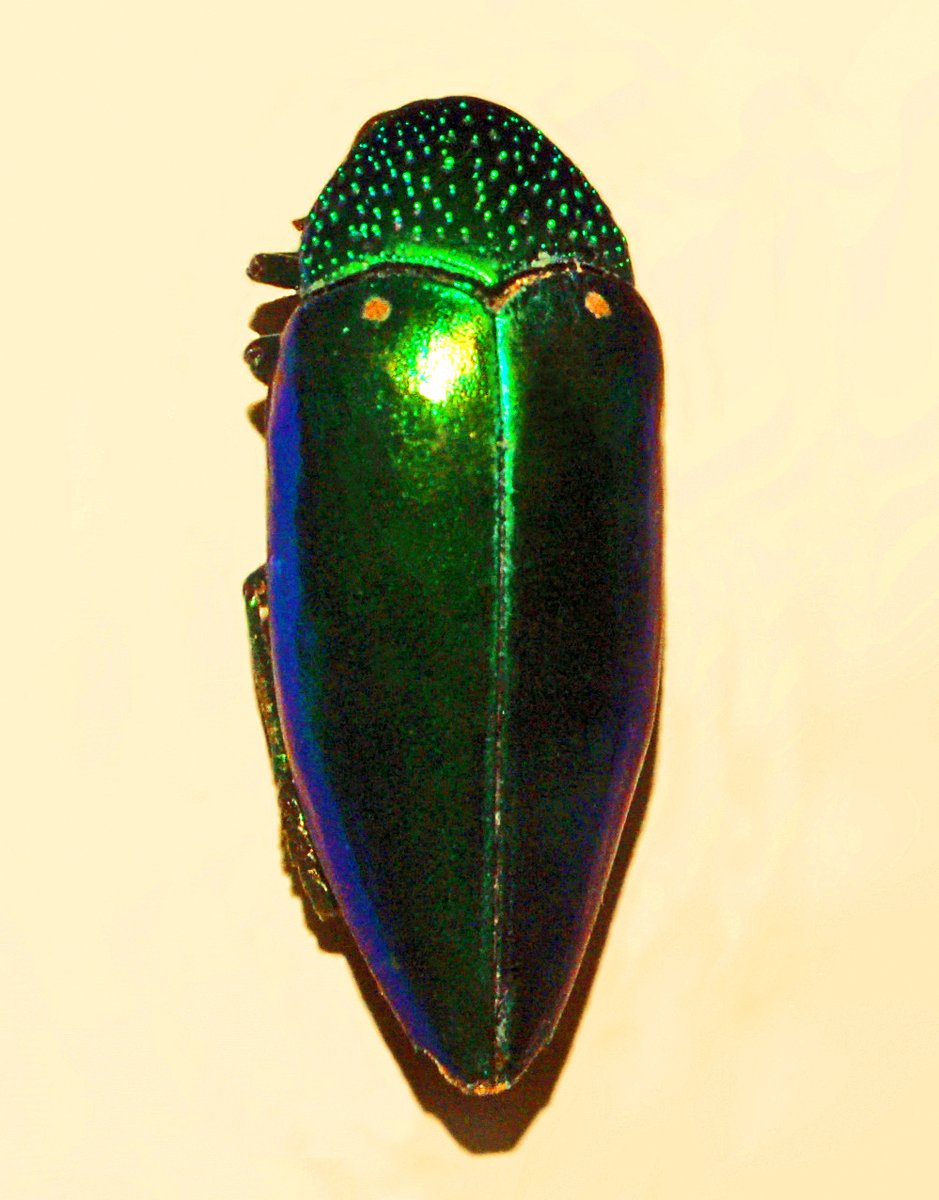
20 - Last week we had a beetle dress. In terms beetlemania in fashion, Lady Curzon's peacock dress is IT.
Designed by the House of Worth, it used zardozi embroidery (another topic we've covered) & beetle wings. It weighed over 10 lbs & was an imperialist statement, for sure.
Designed by the House of Worth, it used zardozi embroidery (another topic we've covered) & beetle wings. It weighed over 10 lbs & was an imperialist statement, for sure.

21 - Before we get to the gowns, here are some things I've also discovered as beads:
- Human teeth
- Human hair
- Dinosaur poop
- funeral remains
- dead flowers
In fact, some rosaries are actually made of roses (the practice originated in India).
- Human teeth
- Human hair
- Dinosaur poop
- funeral remains
- dead flowers
In fact, some rosaries are actually made of roses (the practice originated in India).
22 - This is probably my favorite because it's got beetles AND it's been embroidered in India. The lace was made in Limerick, Ireland & then it was all put together in Paris.
It's by a designer called Rouff, and dates from about 1800. A remarkable tea gown that is SO EXTRA.
It's by a designer called Rouff, and dates from about 1800. A remarkable tea gown that is SO EXTRA.

23 - This dice bag from the early 17th century says "HIT OR MISS" and let's be honest, anyone in my #DND group would wear the hell out of it. It's a quote from Shakespeare, naturally. 

24 - As much as I have a deep, abiding love of vivid, jewel tone colors, I also love brown dresses. I know, it's weird. But I always keep you guessing.
This gown from 1893 combines mutton sleeves with ornate beadwork embellishments for a lot of wow.
It's also got *rhinestones*

This gown from 1893 combines mutton sleeves with ornate beadwork embellishments for a lot of wow.
It's also got *rhinestones*


25 - Another earth tone lovely comes from France in the form of this dinner dress. The bodice almost looks Spanish, to me. It is also from the House of Rouff, and the accents of embroidery really bring this all together.
Also that velvet. Yum. Chocolate.
ca 1900-1903.
Also that velvet. Yum. Chocolate.
ca 1900-1903.

26 - We can't talk about beads and Western fashion without mentioning the Edwardians. Because they were wild about beading anything--near, far, wherever they are.
Now these are BEADS. Like, no joke here. Holy moly. Dating from 1912, and formerly for sale.
Now these are BEADS. Like, no joke here. Holy moly. Dating from 1912, and formerly for sale.

27 - This gown is just the epitome of Edwardian luxury. The three tiers give a sense of movement and the contrast of the red bodice and pale pink is stunning.
The beadwork here is so delicate it's almost like netting in places.
The beadwork here is so delicate it's almost like netting in places.

28 - And then, I mean, if you're going to go for beads, you might as well go ALL THE WAY.
This is a beaded jacket - American, 1895. Impractical perhaps, but I do like the murderous vibe it gives off. After my recent research, I know the feeling.
This is a beaded jacket - American, 1895. Impractical perhaps, but I do like the murderous vibe it gives off. After my recent research, I know the feeling.

29 - And last, but not least (because holy heavens, I have so many sources today) -- this BAMF cape by Pingat in 1895.
These beads are made of JET. And they're so small that they look like sprinkled glitter. I love every detail. The STRUCTURE. The LINES. The SHINE.
Whew.
These beads are made of JET. And they're so small that they look like sprinkled glitter. I love every detail. The STRUCTURE. The LINES. The SHINE.
Whew.

30 - I hope you look at beads a little differently. There is SO MUCH MORE to this topic, but -- well, #ThreadTalk is just a thread.
Look closely, now...
See? This Pingat cape directly steals from Plains tribes tribal motifs, clear as day. How's that for full-circle?
Look closely, now...
See? This Pingat cape directly steals from Plains tribes tribal motifs, clear as day. How's that for full-circle?

31 - Now it's time for SOURCES. There are... many.
world-archaeology.com/world/africa/m…
usslave.blogspot.com/2011/10/africa…
en.wikipedia.org/wiki/Aterian
en.wikipedia.org/wiki/Beadwork
okhistory.org/publications/e…
wildasteria.com/history
artsandculture.google.com/exhibit/beadwo…
vogue.com/vogueworld/art…
world-archaeology.com/world/africa/m…
usslave.blogspot.com/2011/10/africa…
en.wikipedia.org/wiki/Aterian
en.wikipedia.org/wiki/Beadwork
okhistory.org/publications/e…
wildasteria.com/history
artsandculture.google.com/exhibit/beadwo…
vogue.com/vogueworld/art…
32 - Sources... again.
persee.fr/doc/befeo_0336…
native-languages.org/beadwork.htm
powwows.com/native-america…
mnopedia.org/evolution-dako…
mnhs.org/sevencouncilfi…
dp.la/exhibitions/hi…
blog.beadsofcambay.com/the-ultimate-g…
ancientbead.com/Ancient_bead_p…
jstor.org/stable/605624?…
kshs.org/kansapedia/nat…
persee.fr/doc/befeo_0336…
native-languages.org/beadwork.htm
powwows.com/native-america…
mnopedia.org/evolution-dako…
mnhs.org/sevencouncilfi…
dp.la/exhibitions/hi…
blog.beadsofcambay.com/the-ultimate-g…
ancientbead.com/Ancient_bead_p…
jstor.org/stable/605624?…
kshs.org/kansapedia/nat…
33 - More sources ... metmuseum.org/toah/hd/egam/h…
beadinggem.com/2009/05/making…
en.wikipedia.org/wiki/Hair_jewe…
en.wikipedia.org/wiki/Mutisalah
en.wikipedia.org/wiki/Kiffa_bea…
en.wikipedia.org/wiki/Prehistor…
mnhs.org/historycenter/…
wanderingbull.com/native-america…
digitalassets.lib.berkeley.edu/anthpubs/ucb/t…
metmuseum.org/exhibitions/li…
beadinggem.com/2009/05/making…
en.wikipedia.org/wiki/Hair_jewe…
en.wikipedia.org/wiki/Mutisalah
en.wikipedia.org/wiki/Kiffa_bea…
en.wikipedia.org/wiki/Prehistor…
mnhs.org/historycenter/…
wanderingbull.com/native-america…
digitalassets.lib.berkeley.edu/anthpubs/ucb/t…
metmuseum.org/exhibitions/li…
34 - And finally, the last batch of sources.
frockflicks.com/harlots-season…
vam.ac.uk/blog/caring-fo…
vam.ac.uk/articles/india…
digitalcommons.unl.edu/cgi/viewconten…
archaeologicalmuseum.jhu.edu/about-us/2014-…
metmuseum.org/toah/hd/egfc/h…
metmuseum.org/blogs/collecti…
kam.illinois.edu/resource/beads…
usslave.blogspot.com/2011/10/africa…
frockflicks.com/harlots-season…
vam.ac.uk/blog/caring-fo…
vam.ac.uk/articles/india…
digitalcommons.unl.edu/cgi/viewconten…
archaeologicalmuseum.jhu.edu/about-us/2014-…
metmuseum.org/toah/hd/egfc/h…
metmuseum.org/blogs/collecti…
kam.illinois.edu/resource/beads…
usslave.blogspot.com/2011/10/africa…
35 - Thanks so much for coming to #ThreadTalk I hope this week you learn to look beyond, to go a little deeper than is maybe comfortable.
It doesn't mean it stops being beautiful; it becomes more complex. Just like human history. One single bead can tell a whole story.
It doesn't mean it stops being beautiful; it becomes more complex. Just like human history. One single bead can tell a whole story.

• • •
Missing some Tweet in this thread? You can try to
force a refresh
